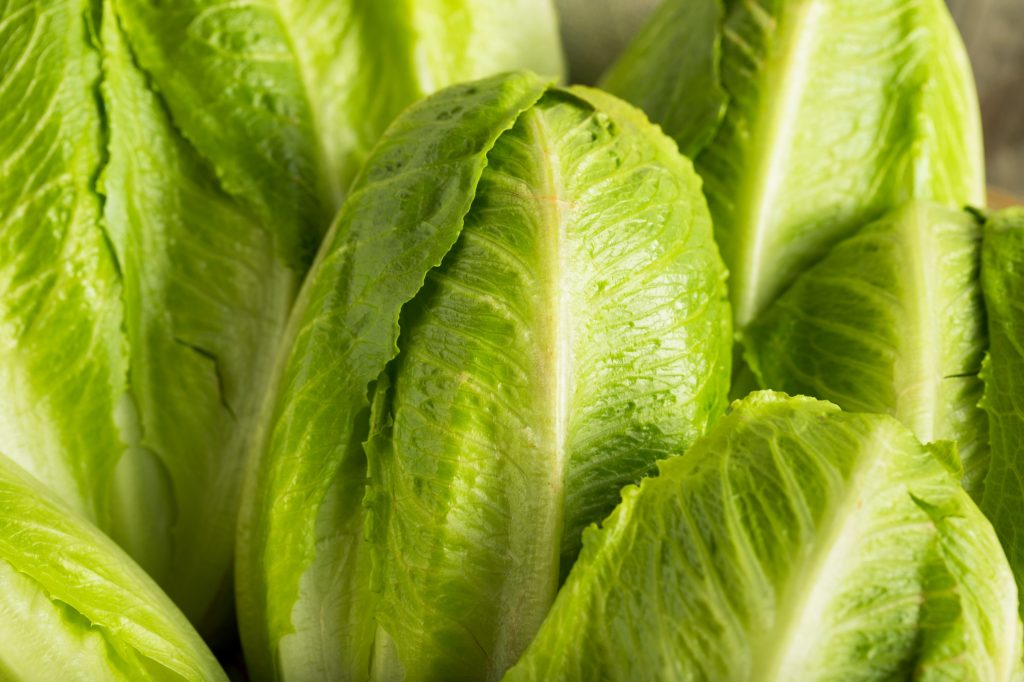The Centers for Disease Control and Prevention (CDC) is warning people not to eat romaine lettuce in the wake of a new E. coli outbreak. Since October 8, 32 people in 11 states have been infected with the bacteria, which has been traced back to contaminated romaine lettuce. So far, 13 people have been hospitalized. While no deaths have been reported, one person has developed a type of kidney failure called hemolytic uremic syndrome (HUS).
The CDC is warning consumers not to eat any romaine lettuce until more is known about the current outbreak. Throw away any and all romaine you may have at home, including whole heads of the lettuce, hearts of romaine, and any boxed or bagged salad mixes containing romaine, and then sanitize fridge drawers and shelves where the lettuce was stored. The CDC is also urging restaurants and retailers to take romaine off the menu.
If this sounds familiar, it may because of a similar E. coli outbreak linked to romaine lettuce that sickened 210 people in 36 states from March to June 2018. Nearly 100 people were hospitalized and five died as a result of that contamination, which is thought to have originated in the Yuma, Arizona growing region.
While the investigation is ongoing as to exactly what started the current outbreak, here’s what you need to know to stay safe.
What is E. coli?

Escherichia coli, or E. coli, is a bacteria that inhabits the gut of humans as well as other animals, says Pritish Tosh, MD, an infectious disease physician and researcher at the Mayo Clinic. Many types of E. coli are normal, harmless parts of the flora of the gut.
Contamination with E. coli can occur at any point in the food production cycle, from when it’s picked to when it’s processed and packaged. Says Dr. Tosh: “Let’s say a person is making a chicken salad in their own kitchen, and doesn’t use good food preparation habits, like hand-washing first. That could contaminate the vegetables in the salad.”
E. coli symptoms to watch for
Dr. Tosh says that common symptoms of an E. coli infection are diarrhea, fever, and abdominal cramping. You’ll typically get sick with bloody diarrhea about three to four days after you’ve been contaminated, and most people recover in a week with proper rest and hydration, says Laura Gieraltowski, PhD, MPH, an epidemiologist at the CDC. “It’s a tough week, but it’s usually over within a week.”
Sometimes, however, an E. coli infection turns into the much more serious hemolytic uremic syndrome, as has happened during this current outbreak. HUS is most common among children under the age of 5, older adults, and people with weakened immune systems, says Gieraltowski. Symptoms include fever, abdominal pain, pale skin tone, and decreased urination. Anyone who has these symptoms should seek emergency medical care, advises Gieraltowski.
What types of lettuce are safe?
Avoid all romaine lettuce until further notice from the CDC.
“Even if you ate half of a bag of romaine and didn’t get ill, don’t eat [the rest] and throw it away,” Gieraltowski says.
The CDC recommendations are for romaine lettuce only, so keep getting the health benefits of greens by switching to kale, spinach, or other types of leafy greens.
The outbreak is a reminder of how important meal prep hygiene is, so here’s a refresher. Always wash your hands before and after preparing fruits and vegetables, and wash or scrub all produce before cutting, cooking, and eating, advises the CDC. One exception: If you buy greens labeled pre-washed, the CDC says you don’t have to wash them again.

